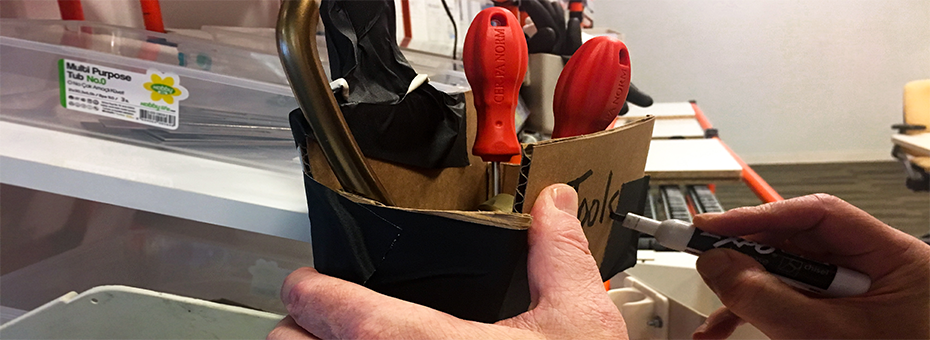I remember the date like it was tattooed on my left arm. October 25, 1994. It was a Tuesday.
I’d been given the assignment to go and work with a company that produced roll-formed metal parts for the appliance industry just outside of Chattanooga, Tennessee. I had just moved from Toyota City, Japan, to Lexington, Kentucky. Toyota had transferred me from a product planning job (read desk jockey) to working at Toyota Supplier Support Center (TSSC).
Toyota established TSSC in 1992 with the sole purpose of sharing the vaunted Toyota Production System (TPS) with any manufacturing company that was interested in transforming its manufacturing operations from traditional push-type manufacturing to a pull system using TPS. Amazingly, Toyota did this for nothing — for many years, we didn’t even charge companies for our travel costs. Of course, a majority of these companies were Toyota suppliers, but many also were not. So, furniture, toy, and household goods manufacturers and companies in many other industries could benefit by learning about TPS. And Toyota helped companies actually change the plant floor — this was not a training course.
Toyota helped these other companies for many reasons, some political. Still, regardless Toyota had made a significant corporate decision to give its most precious know-how to anyone who asked. To this day, that idea seems a bit unreal to me.
But I was a fairly young employee who had spent six years working in Toyota Motor Corporation (TMC) in Toyota City, Japan, the only American in a Department of 150 people. And the work I did was all administrative, working with Chief Engineers to plan new vehicles for overseas markets.
In 1994, I was transferred from Japan to Lexington to work in TSSC, and the third week, after I arrived in the U.S., I was asked to go to Chattanooga.
My mentor at this project was Mr. Yokoi (I mentioned him in my last column), who had been sent for four months to the U.S. from Japan to help TSSC transform companies and develop people like me, greenhorn Americans who had little or no experience.
My career up to this point had been behind a desk. I was an English major in college with no production background — and no engineering experience. But Toyota chose to invest in trying to educate me.
As true lean practitioners, we should demonstrate with the company how to make physical change at the gemba. Coaching advice isn’t enough if the gemba doesn’t change for the better.
One day, I was standing on a shop floor in Chattanooga staring at a semi-automated arc-welding and assembly operation. Mr. Yokoi was off somewhere in the same plant trying to fix a big problem of defective parts getting out to customers. He had asked me to look at this production cell with the purpose of improving productivity. The person responsible for arc welding performed the welding of two components of a refrigerator door handle. Another operator received the welded part, packed it, boxed it, and put it in a pile for shipping.
Mr. Yokoi had given me, what I’m sure to him, was a simple assignment to take out the waste of this operation so that one person could do welding, packing, and boxing. But I’m also sure he knew that, with my capability, this would not be easy.
And his initial instruction was amazingly vague. Stand right here, watch this operation, identify waste, and see if one person can do it, not two. Then he’d run off to his other duties.
I stood and watched, wrote down a few ideas I had for improvements, and after what seemed like an eternity (though it was only a couple of hours), Mr. Yokoi stopped by again. He asked what I’d done. I showed him my ideas and shared my brilliance, believing he would fully agree. My ideas were so good! One example: as part of the welding process, the operator had to stand and hold the part’s right side while the left side was welded, which seemed like waste to me. He just stood there holding the part — why not ask maintenance to build a small jig on which it could rest. Pretty smart, huh?
Mr. Yokoi didn’t seem to think so. He looked at me quizzically, laughed, and walked away. What did I do? Was I supposed to follow him? I stood there, a bit stunned.
This time he came back in five minutes. He had a bunch of cardboard under his left arm and a roll of duct tape in his right hand.
He said, “Before we send maintenance off on some adventure and potentially waste their time, build this little jig of yours with cardboard and duct tape.” (Let’s just say, his English wasn’t that perfect, and he wasn’t quite that cordial). Then he handed me the cardboard and duct tape and walked away.
WTF was I supposed to do with this stuff?
So I spent the next hour figuring out how this might work, how I might design it. I wrote out a sketch, and when Mr. Yokoi came back, I showed it to him. He looked at the cardboard and duct tape laying on the factory floor next to the machine and said: “Maybe you didn’t understand. I wanted you to actually use that stuff. You don’t need this” (again, edited for English quality and cordiality), while pointing at my sketch. He looked at me much less pleased this time and stormed off quickly.
So I picked up the things he’d handed me, grabbed a cutter, got down on the floor next to the machine, and actually tried to make a cardboard jig.
And an amazing thing happened over the afternoon.
First of all, it took me more than an hour just to get something cut out and constructed with the cardboard and duct tape that had hope of being sturdy enough to hold up under repeated use. Then, once I’d gotten something together, I realized that to try it, I actually had to interact with the Team Member doing the job to see:
- If it worked for him. Did this help him solve a struggle he had?
- If it fit dimensionally in the machine.
It was a transformative experience for me. We talk a lot about the importance of engaging the Team Members and hearing their ideas. But this approach was something much more. It was in many ways like hand-writing an A3. Through the use of cardboard and duct tape, I was able to work together with the Team Member, pull in his ideas, and engage together to make something that worked for him. He really was part of the improvement process. Finally, after multiple tries with the Team Member, we landed on something that worked and then asked maintenance to make something more permanent.
Mr. Yokoi had taught me an amazing lesson in kaizen and in life (he did come back at the end of the day, laughed, and clapped at my cardboard kaizen, by the way).
During the years I subsequently spent at TSSC, cardboard, duct tape, and string were constantly reinforced as the main tools of our kaizen efforts. It allowed for quick kaizen, cost no money, and most importantly, was a primary tool to work together with the Team Members to improve the job.
There are a couple more fundamental concepts here.
As true lean practitioners, we should demonstrate with the company how to make physical changes at the gemba. Coaching advice isn’t enough if the gemba doesn’t change for the better. We don’t want to do it for them, but we can demonstrate a good way by doing it with them. And the simple tools of cardboard, duct tape, and string can be that entry-point.
Furthermore, on a bit deeper level, using cardboard, duct tape, and string promotes a do-first kaizen mindset. It allows one to iterate quickly and not get stuck overthinking numbers, methods, etc. It gives birth to something more profound than the words “hands-on” can easily convey. As you iterate improvement quickly with these tools, this rapid rhythm of try-adjust-try-adjust can elevate the feeling of kaizen directed towards customer value that the Team Member needs. Dare I say? It creates a kind of kaizen enthusiasm or “high.” Of course, we should understand the purpose behind the improvement, but it is a specific way to spark change.
Whatever field you work in, if you are responsible for kaizen in your company, strive for making quick changes in your workplace by finding your cardboard, duct tape, and string.
To learn more about kaizen, check out the Lean Lexicon definition.
Building a Lean Operating and Management System
Gain the in-depth understanding of lean principles, thinking, and practices.






